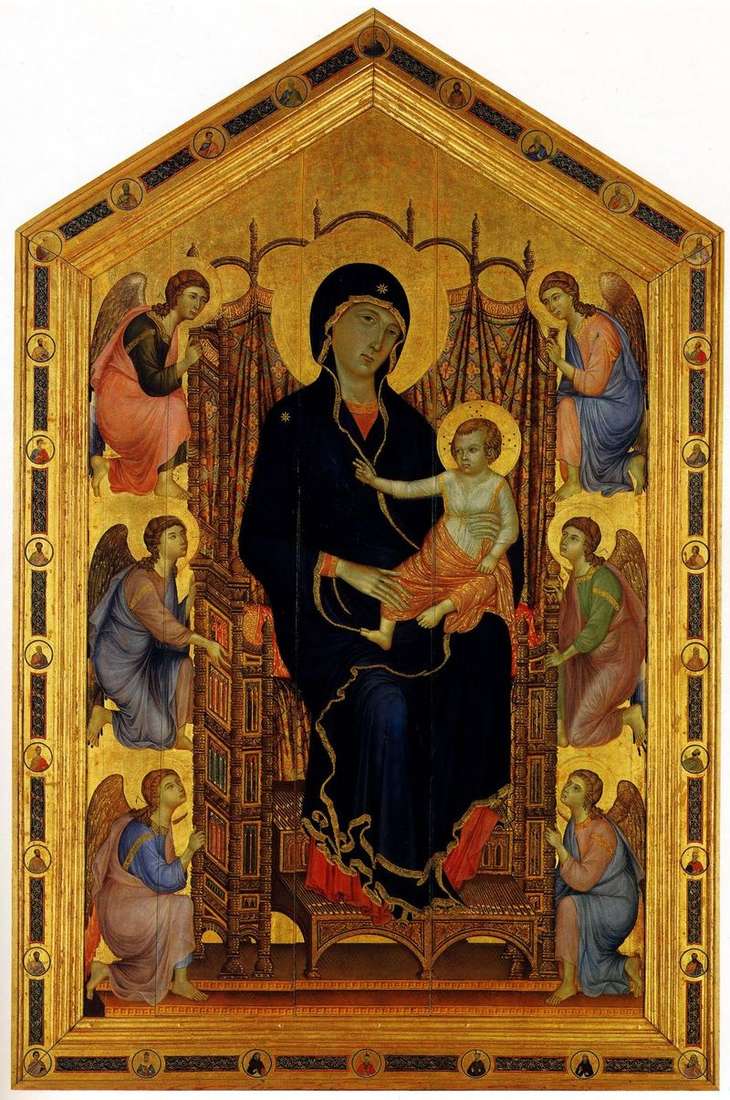
The works of the Florentine master Cimabue, whose work is associated with the Proto-Renaissance, have been preserved a little. He worked in Florence, Pisa, Rome, Assisi. J. Vasari reported that Cimabue was popular and had many students, among whom was Giotto. Dante mentioned Cimabue in the “Divine Comedy” as a master surpassed only by Giotto.
The development of the artist’s work is associated with the traditions of Byzantine painting and with the so-called “Greek manner” in the Italian art of the 13th century. Under the influence of new ideas, addressed to a living sense of religiosity, the artist moved away from the dryish forms of “Greek manners.” In his images there is no convention, they are endowed with classical beauty, they have great plasticity.
The artist’s lines are smooth and soft, he gently models the form, connects the restrained “sensuality” with the sublimity. Other famous works: “Crucifixion”. OK. 1274. Museum of the Site of Croce, Florence; “The Madonna on the throne.” OK. 1279-1280. The Uffizi Gallery, Florence; murals with episodes from the life of Mary, the Apostle Peter and the Apocalypse. OK. 1279-1280. Basilica in the Upper Church of San Francesco, Assisi.
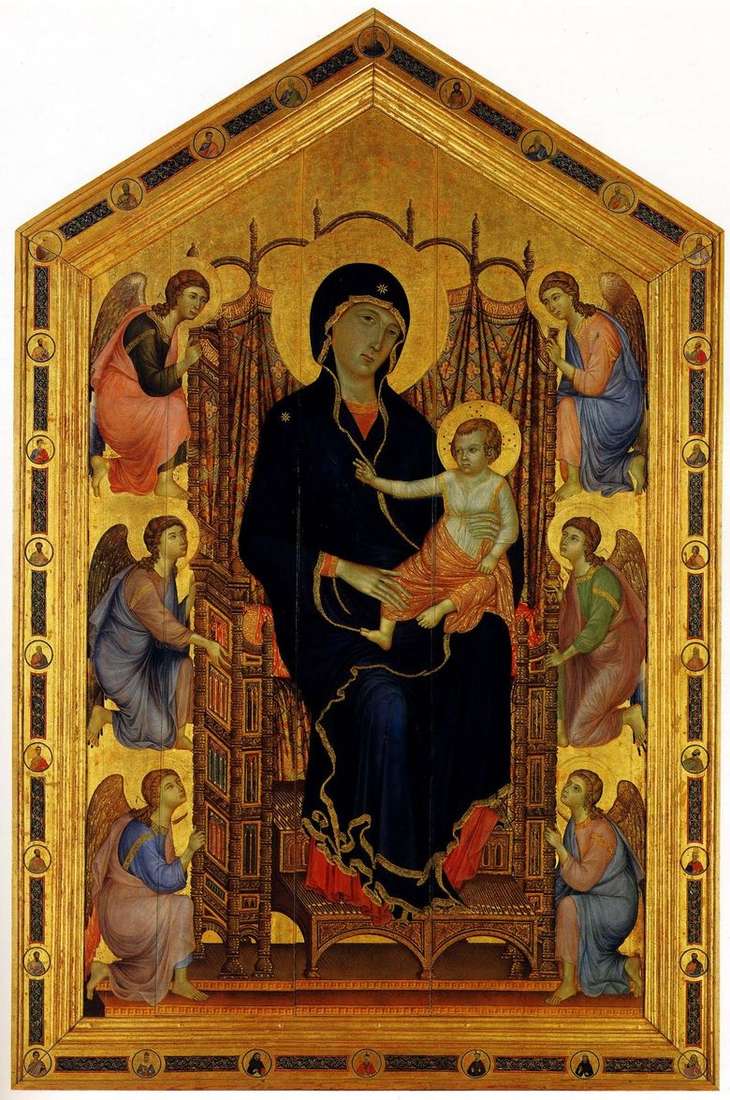 Madonna con los angeles – cimabue
Madonna con los angeles – cimabue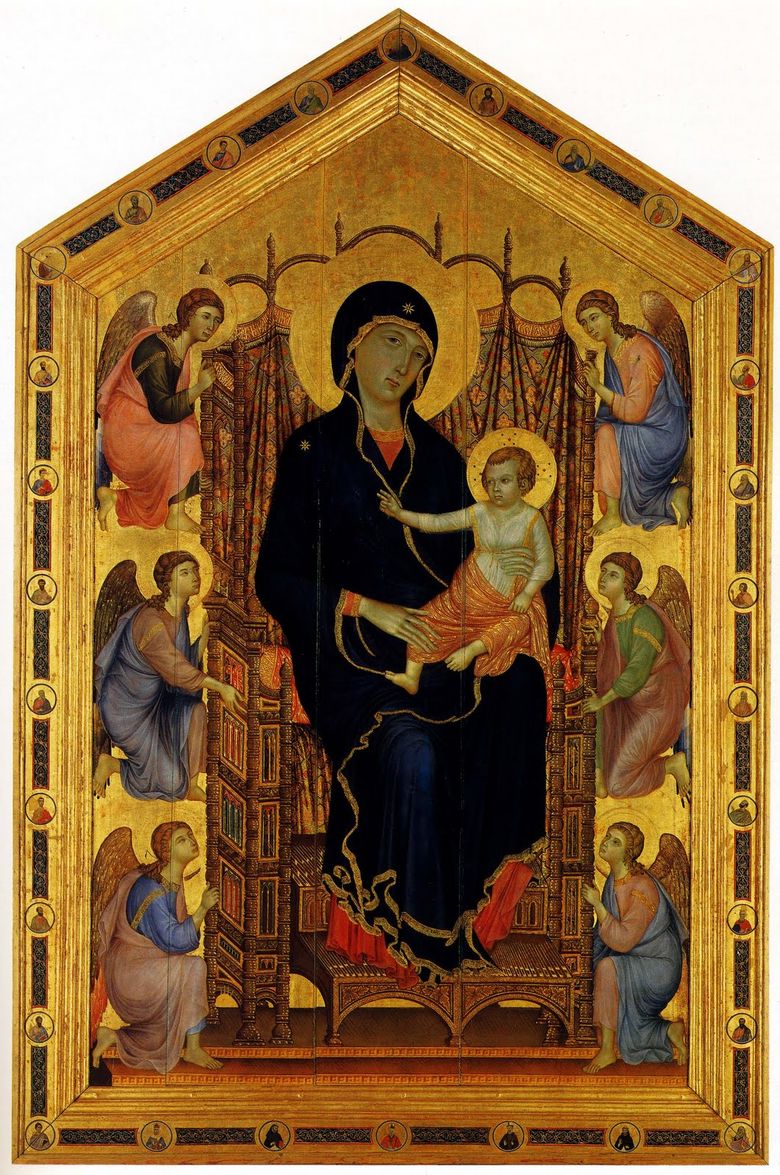 Vierge aux anges – Cimabue
Vierge aux anges – Cimabue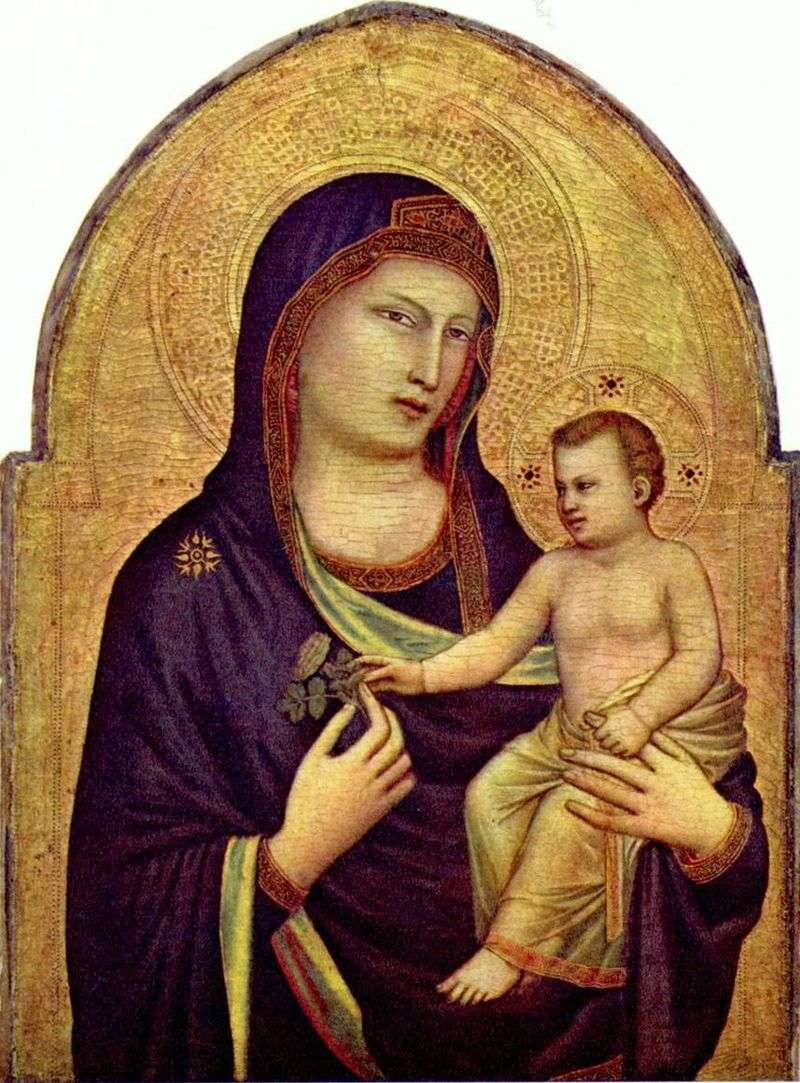 Madonna and Child by Bondone Giotto
Madonna and Child by Bondone Giotto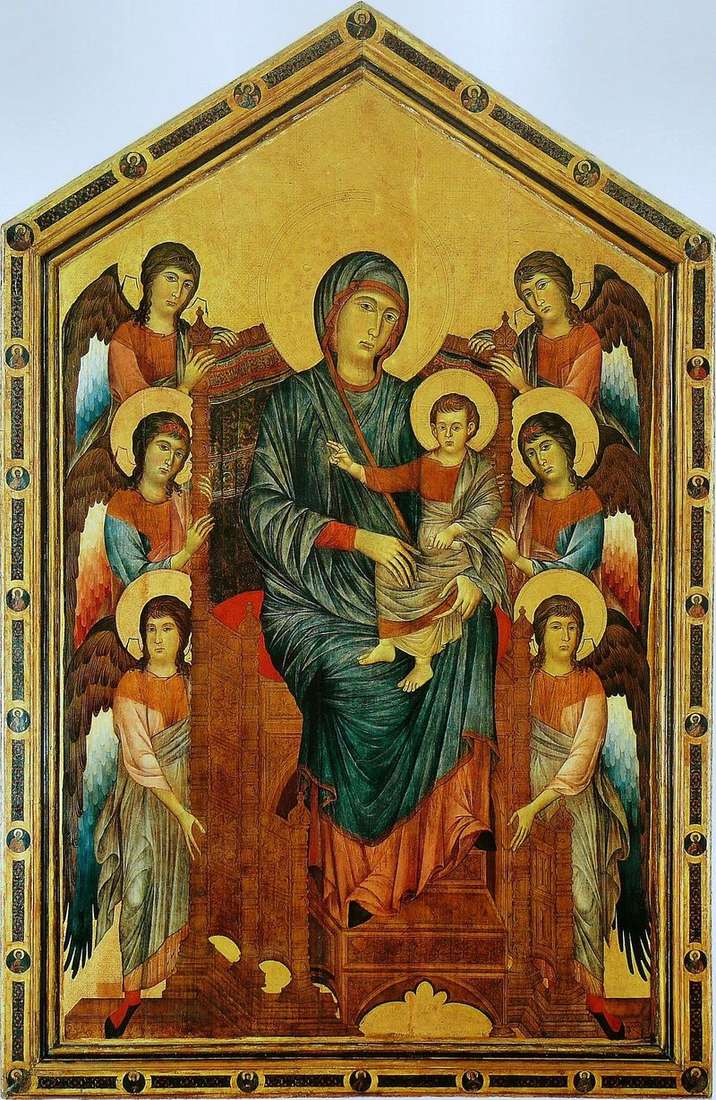 Virgin and Child on a throne surrounded by angels by Chenny Di Pepo
Virgin and Child on a throne surrounded by angels by Chenny Di Pepo Madonna and Child with Angels by Tommaso di Giovanni Masaccio
Madonna and Child with Angels by Tommaso di Giovanni Masaccio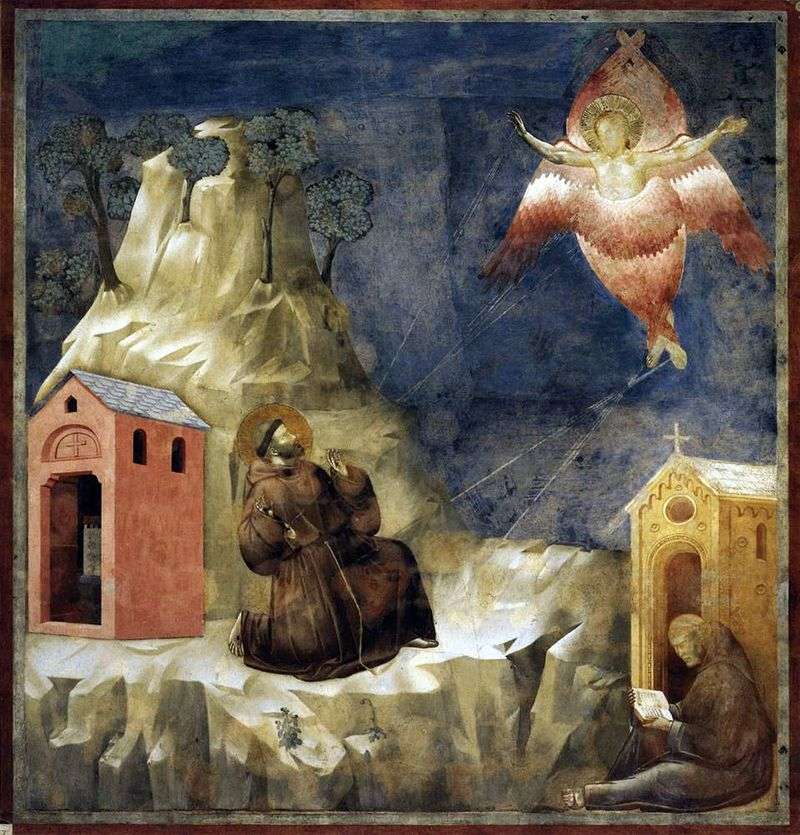 Stigmatization of St. Francis by Giotto
Stigmatization of St. Francis by Giotto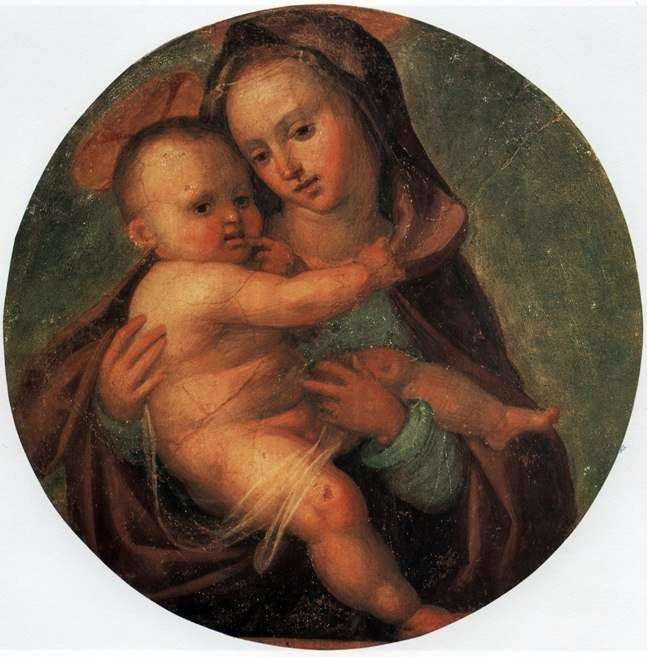 Madonna and Child by Fra Bartolomeo
Madonna and Child by Fra Bartolomeo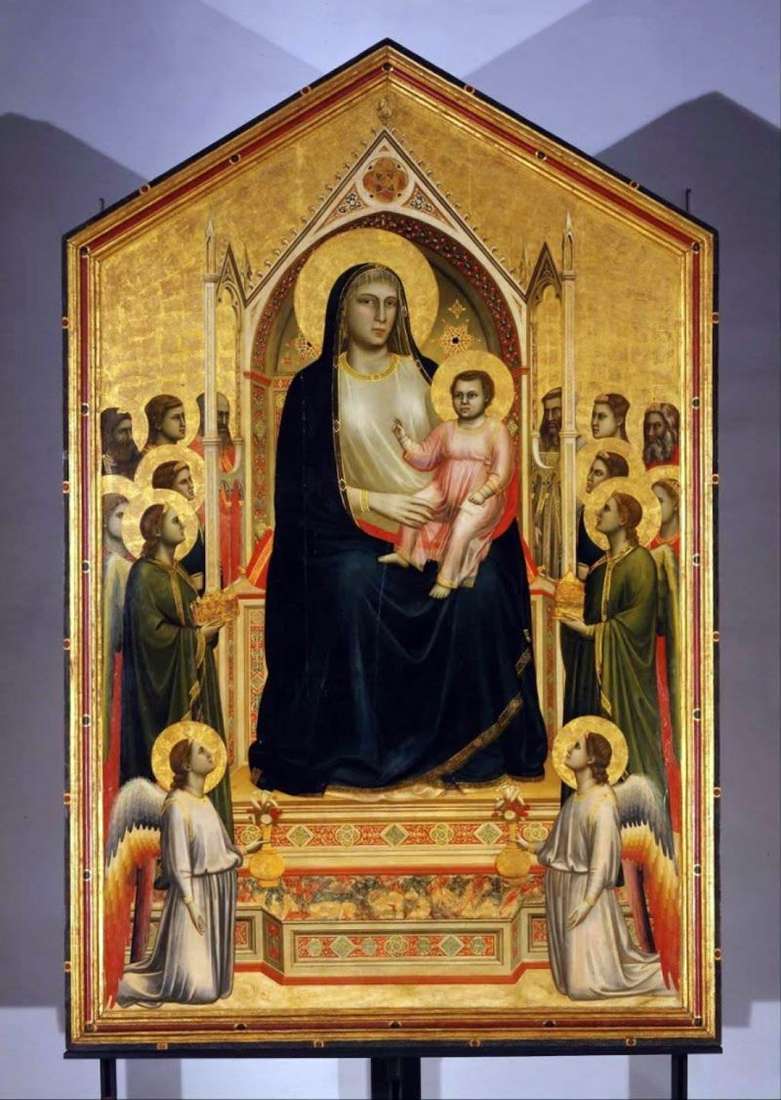 Madonna with Child and Angels (Madonna of Onisanti) by Giotto
Madonna with Child and Angels (Madonna of Onisanti) by Giotto